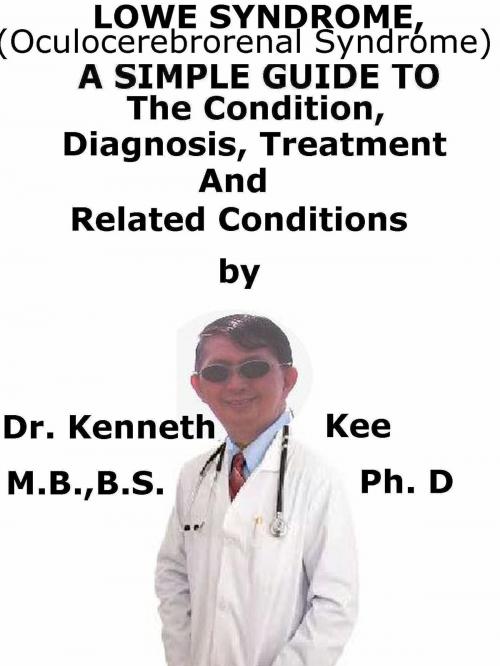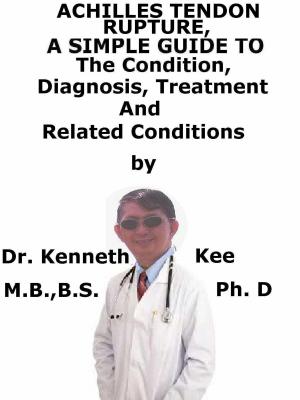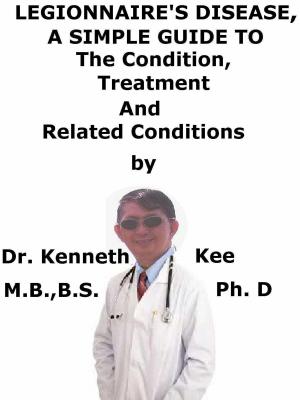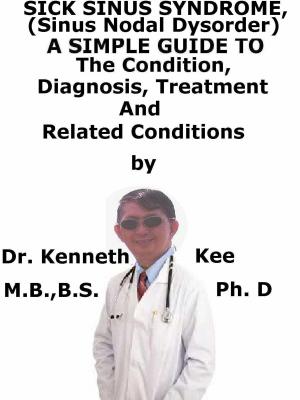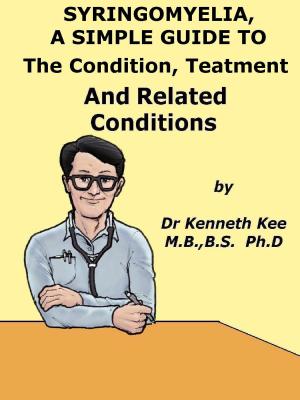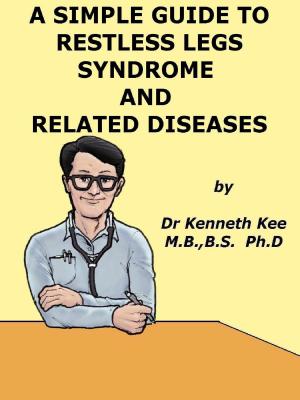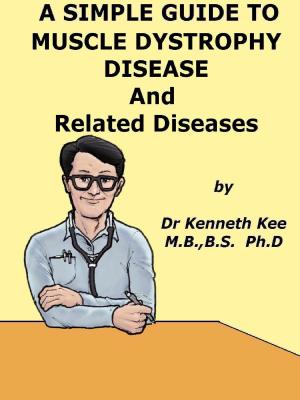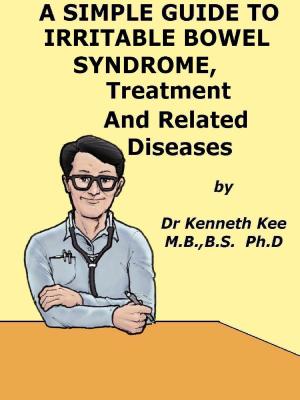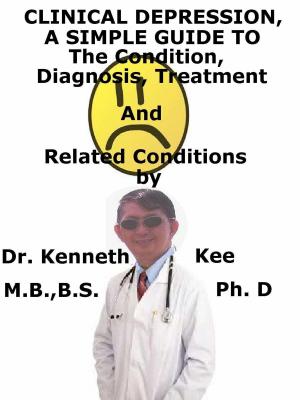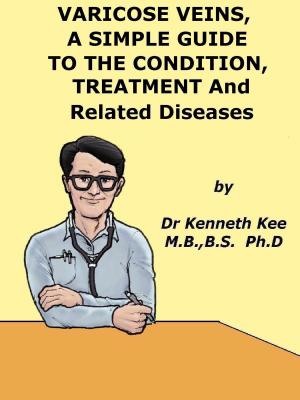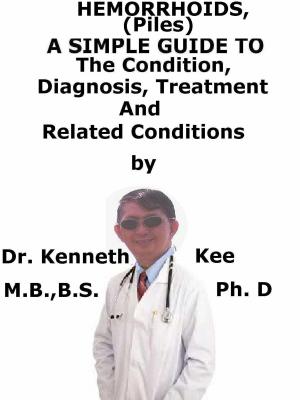Lowe Syndrome (Oculocerebrorenal syndrome) A Simple Guide To The Condition, Diagnosis, Treatment And Related Conditions
Nonfiction, Health & Well Being, Health, Ailments & Diseases, Genetic, Medical, Medical Science, Genetics| Author: | Kenneth Kee | ISBN: | 9781370814930 |
| Publisher: | Kenneth Kee | Publication: | June 13, 2017 |
| Imprint: | Smashwords Edition | Language: | English |
| Author: | Kenneth Kee |
| ISBN: | 9781370814930 |
| Publisher: | Kenneth Kee |
| Publication: | June 13, 2017 |
| Imprint: | Smashwords Edition |
| Language: | English |
Lowe syndrome (oculocerebrorenal syndrome) is characterized by:
1. Vision disorders such as clouding of the lenses of the eyes (cataracts) that are present at birth,
2. Kidney disorders that normally develop in the first year of life, and
3. Brain abnormalities that are linked with intellectual disabilities.
Lowe syndrome is inherited as an X-linked genetic disorder.
Lowe syndrome is a rare genetic disorder that happens almost specially in males.
The frequency is evaluated to be between 1 and 10 males per 1,000,000 people.
It has been identified in most cultures around the world and seems to have the same frequency in all populations.
Because Lowe Syndrome is an X-linked syndrome, the majority of affected persons are males.
There have been a few cases of females diagnosed with Lowe Syndrome.
In these cases, the female typically has one inactive X-chromosome and the active X-chromosome has the mutation for Lowe Syndrome.
Lowe syndrome (the oculocerebrorenal syndrome OCR) is a multiple system disorder that is typically featured by anomalies involving the eye, the nervous system and the kidney.
It is an infrequent, pan-ethnic, X-linked disease.
Bilateral cataract and severe hypo-tonia are present at birth.
In the later weeks or months of the infant, a proximal renal tubulopathy (Fanconi-type) is apparent and the ocular feature may be complicated by glaucoma and cheloids.
Psychomotor retardation is evident in childhood, while behavioral disorders are present and renal complications occur in adolescence.
The mutation of the gene OCRL1 localized at Xq26.1 is accountable for the disease
Phosphatidylinositol 4,5-bisphosphate 5-phosphatase INP51 controls the enzyme phosphatidylinositol (4,5) bisphosphate 5 phosphatase, PtdIns (4,5)P2, in the trans-Golgi network
Both enzymatic and molecular testing is available for confirmation of the diagnosis and for prenatal detection of the disease.
Life span seldom exceeds 40 years.
Mothers may be carriers with
1. 25% possibility of having an affected boy,
2. 25% possibility of having a carrier daughter,
3. 25% possibility of having an unaffected boy,
4. 25% possibility of having a non-carrier girl.
Female carriers of Lowe syndrome may be diagnosed in 94% of patients by slit-lamp examination because of the presence of considerably punctuate white to grey opacities, issued in a radial fashion in all layers of the lenticular cortex.
Using flanking linked markers, DNA analysis can show the same molecular defect (in a heterozygous state) as that previously recognized in the patient.
Boys with Lowe syndrome have cataracts that are present at birth in each eye
About half of eyes will form high pressure in the eye (glaucoma) that can injure the optic nerve
Infants with Lowe syndrome have poor muscle tone (hypo-tonia) at birth.
The kidney disorders linked with Lowe syndrome is called proximal tubular dysfunction of the Fanconi type.
There is no cure for Lowe Syndrome, but many of the symptoms can be treated successfully by:
1. Medicines,
2. Surgery,
3. Physical and occupational treatments,
4. Vision therapy,
The treatments are:
1. Cataract extraction,
2. Glaucoma control,
3. Physical and speech therapy,
4. Use of drugs to address behavioral problems, and
5. Correction of the tubular acidosis
Seizure disorders are treated with anticonvulsant medications.
Behavior disorders are treated with behavior modification and medications.
Early intervention programs are advised and should start in early infancy:
1. Physical therapy,
2. Occupational therapy,
3. Speech and language therapy,
4. Special education services
5. Services for visually impaired.
The longest reported survival is that of a 54 year-old patient.
TABLE OF CONTENT
Introduction
Chapter 1 Lowe Syndrome
Chapter 2 Causes
Chapter 3 Symptoms
Chapter 4 Diagnosis
Chapter 5 Treatment
Chapter 6 Prognosis
Chapter 7 Cataract
Chapter 8 Renal Failure
Epilogue
Lowe syndrome (oculocerebrorenal syndrome) is characterized by:
1. Vision disorders such as clouding of the lenses of the eyes (cataracts) that are present at birth,
2. Kidney disorders that normally develop in the first year of life, and
3. Brain abnormalities that are linked with intellectual disabilities.
Lowe syndrome is inherited as an X-linked genetic disorder.
Lowe syndrome is a rare genetic disorder that happens almost specially in males.
The frequency is evaluated to be between 1 and 10 males per 1,000,000 people.
It has been identified in most cultures around the world and seems to have the same frequency in all populations.
Because Lowe Syndrome is an X-linked syndrome, the majority of affected persons are males.
There have been a few cases of females diagnosed with Lowe Syndrome.
In these cases, the female typically has one inactive X-chromosome and the active X-chromosome has the mutation for Lowe Syndrome.
Lowe syndrome (the oculocerebrorenal syndrome OCR) is a multiple system disorder that is typically featured by anomalies involving the eye, the nervous system and the kidney.
It is an infrequent, pan-ethnic, X-linked disease.
Bilateral cataract and severe hypo-tonia are present at birth.
In the later weeks or months of the infant, a proximal renal tubulopathy (Fanconi-type) is apparent and the ocular feature may be complicated by glaucoma and cheloids.
Psychomotor retardation is evident in childhood, while behavioral disorders are present and renal complications occur in adolescence.
The mutation of the gene OCRL1 localized at Xq26.1 is accountable for the disease
Phosphatidylinositol 4,5-bisphosphate 5-phosphatase INP51 controls the enzyme phosphatidylinositol (4,5) bisphosphate 5 phosphatase, PtdIns (4,5)P2, in the trans-Golgi network
Both enzymatic and molecular testing is available for confirmation of the diagnosis and for prenatal detection of the disease.
Life span seldom exceeds 40 years.
Mothers may be carriers with
1. 25% possibility of having an affected boy,
2. 25% possibility of having a carrier daughter,
3. 25% possibility of having an unaffected boy,
4. 25% possibility of having a non-carrier girl.
Female carriers of Lowe syndrome may be diagnosed in 94% of patients by slit-lamp examination because of the presence of considerably punctuate white to grey opacities, issued in a radial fashion in all layers of the lenticular cortex.
Using flanking linked markers, DNA analysis can show the same molecular defect (in a heterozygous state) as that previously recognized in the patient.
Boys with Lowe syndrome have cataracts that are present at birth in each eye
About half of eyes will form high pressure in the eye (glaucoma) that can injure the optic nerve
Infants with Lowe syndrome have poor muscle tone (hypo-tonia) at birth.
The kidney disorders linked with Lowe syndrome is called proximal tubular dysfunction of the Fanconi type.
There is no cure for Lowe Syndrome, but many of the symptoms can be treated successfully by:
1. Medicines,
2. Surgery,
3. Physical and occupational treatments,
4. Vision therapy,
The treatments are:
1. Cataract extraction,
2. Glaucoma control,
3. Physical and speech therapy,
4. Use of drugs to address behavioral problems, and
5. Correction of the tubular acidosis
Seizure disorders are treated with anticonvulsant medications.
Behavior disorders are treated with behavior modification and medications.
Early intervention programs are advised and should start in early infancy:
1. Physical therapy,
2. Occupational therapy,
3. Speech and language therapy,
4. Special education services
5. Services for visually impaired.
The longest reported survival is that of a 54 year-old patient.
TABLE OF CONTENT
Introduction
Chapter 1 Lowe Syndrome
Chapter 2 Causes
Chapter 3 Symptoms
Chapter 4 Diagnosis
Chapter 5 Treatment
Chapter 6 Prognosis
Chapter 7 Cataract
Chapter 8 Renal Failure
Epilogue
